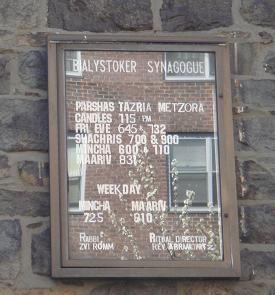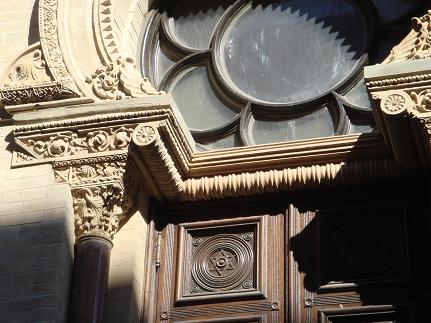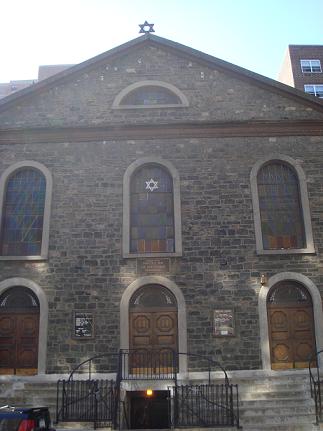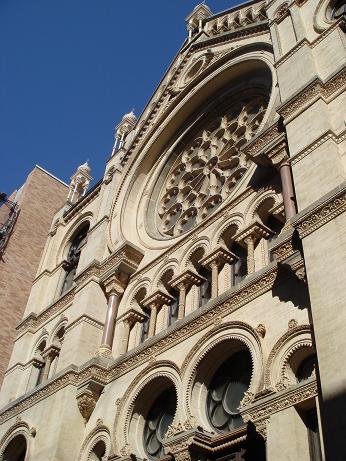Judaism
From The Peopling of NYC
For many people, especially immigrants coming to the United States during the 19th and 20th centuries, religion was more than a connection with God. For Eastern European Jews, for example, synagogues were also centers for acculturation. Two important synagogues in the Lower East Side are the Bialystoker Synagogue (1865) and the Eldridge Street Synagogue (1887).
Before community homes were created in the neighborhood, Eldridge provided food for the poor, gave loans, and extended medical care for the sick. It was also a place where these startled immigrants learned about job openings and housing opportunities. The Bialystoker Synagogue was first created in 1865. Word has it that it was a stop for slaves escaping the south on the Underground Railroad. Religious edifices were comfort zones from the harsh reality of mainstream society.
Reform Judaism and the German Jewish Population in America
The German Jews already in America were largely part of the Reform Movement - few synagogues were Orthodox in 1881. Reform Jews permitted families to sit together in temple instead of dividing themselves by gender. Dietary laws were no longer strictly followed, in fact at an 1883 celebration of the Union of American Hebrew Congregations, the first course was actually shellfish!
Return to Orthodoxy: The Eastern European Jews and The Anti-Assimilation Crusade
By 1910, with the influx of hundreds of thousands of Eastern European Jews, 90% of U.S. syngagogues were considered Orthodox. The goal of Eastern European Jews was the adoption of American mores without the destruction of the essense of Jewish faith and tradition. The Jewish Theological Seminary was created to uphold this purpose as the nation's first voice of Orthodox Judaism. Leaders, such as Solomon Scheter, lobbyed against Sunday closing laws and fought for a 5-day work week to make the observance of Shabbat (the sabbath) easier.
Conservative Judaism
Convervative Judaism, as a “halfway mark” between Reform and Orthodox Judaism, allowed many Jews who wanted to preserve traditional forms of the religion with the option to choose which aspects they would maintain. It was an attractive option for children of Eastern European immigrants who wanted to keep the Jewish tradition while conforming to a modern and American society.




